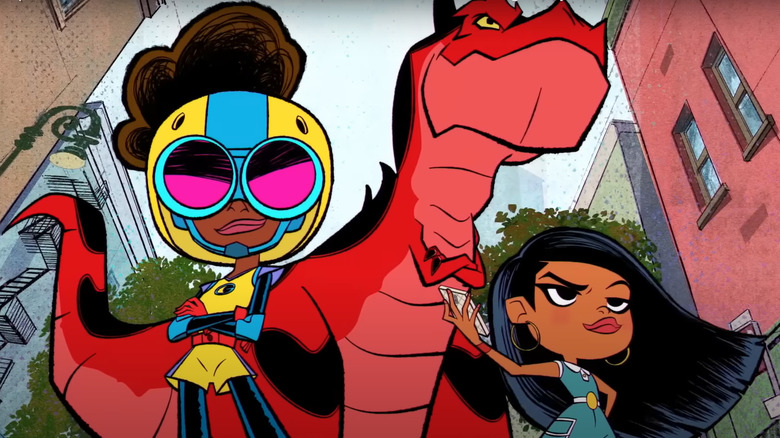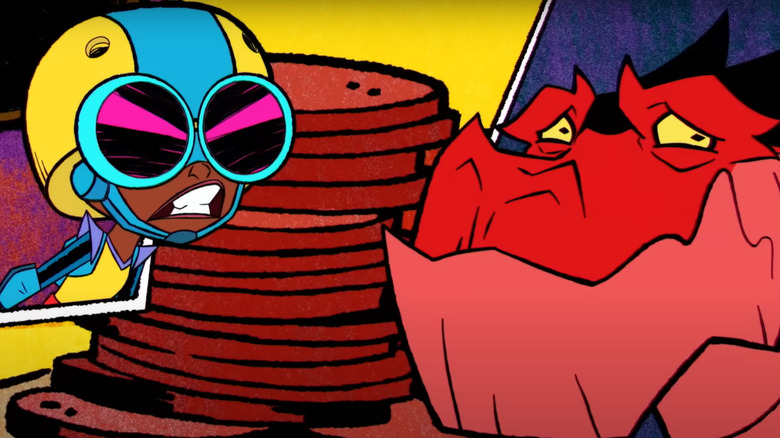Is Marvel's Moon Girl And Devil Dinosaur Canon To The MCU?
With how far the Marvel Cinematic Universe has expanded since its inception, it's getting harder to keep up with which Marvel projects are canon to the franchise, and which aren't. Not only is there a massive list of films and TV shows to take note of, but multiverse-centric adventures like "Spider-Man: No Way Home" have retroactively added legacy films like 2002's "Spider-Man" and 2018's "Venom" into the canon. As such, some fans may be wondering whether the Disney Channel animated series "Moon Girl and Devil Dinosaur" falls somewhere into that very same continuity, and where it sits in the MCU timeline if it does.
As it currently stands, "Moon Girl and Devil Dinosaur" is not part of the MCU and instead takes place within its own standalone canon. However, there is a possibility that it could be folded into the greater MCU continuity eventually. As mentioned prior, some legacy Marvel content has been confirmed to take place on parallel Earths to the MCU, and it's possible that Moon Girl's universe could collide with Earth-199999 during yet another multiversal escapade. Even animated properties like "Spider-Man: Across the Spider-Verse" have forged ties with the MCU, so there's every chance that a similar crossover could happen in the future.
Moon Girl draws inspiration from another Marvel movie
"Moon Girl and Devil Dinosaur" may not be canon to the MCU — or any other strand of Marvel canon, for that matter — but that doesn't mean it exists completely in a vacuum. In fact, the creators of the show were partially inspired by 2018's "Spider-Man: Into the Spider-Verse," which similarly employed a comic-book-brought-to-life style. "'Spider-Verse' was inspirational in opening the doors to being more creative and risk-taking and pushing the envelope of design in music and animation," series showrunner Steve Loter told Deadline. "We were looking and asking ourselves, 'How can we do that? How can we do our own Spider-Verse?' But not copying it, we wanted to put our own flag in the sand, and we also wanted to do it on a TV budget."
The result of Loter and the rest of the team's creative process was a series that mirrors the vivid visuals of the 2018 animated Spidey flick, but also draws from styles like graffiti and pop art to form its own unique identity. "We think those styles marry each other, not compete against each other," supervising producer Rodney Clouden explained. "And then with the animation style, you have a combination of the zippy and poppy, and then you'll have moments where you need to focus on the dialogue or the danger of the situation, and we slow it down, and it's a little bit more fluid."

